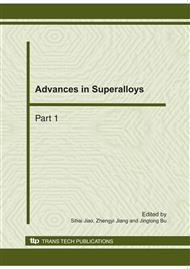p.1761
p.1765
p.1769
p.1775
p.1780
p.1784
p.1788
p.1792
p.1797
Very High Cycle Fatigue Behavior of Carbon Manganese Steels
Abstract:
An ultrasonic fatigue testing system capable of operating at temperatures at 250 has been introduce to study the fatigue behavior of carbon manganese steels (A42 and A48) and loading frequency of approximately 20 kHz. Endurance limit results were comparable to those generated at room temperature to determine the effect of temperature. Scanning electron microscopy was then used to determine the initiation sites and the failure mechanisms. Initial results indicate that fatigue strength decrease a little at 250 , interior inclusions were the major microstructural feature responsible for crack initiation in the alloy.
Info:
Periodical:
Pages:
1780-1783
Citation:
Online since:
October 2010
Authors:
Keywords:
Price:
Сopyright:
© 2011 Trans Tech Publications Ltd. All Rights Reserved
Share:
Citation:


